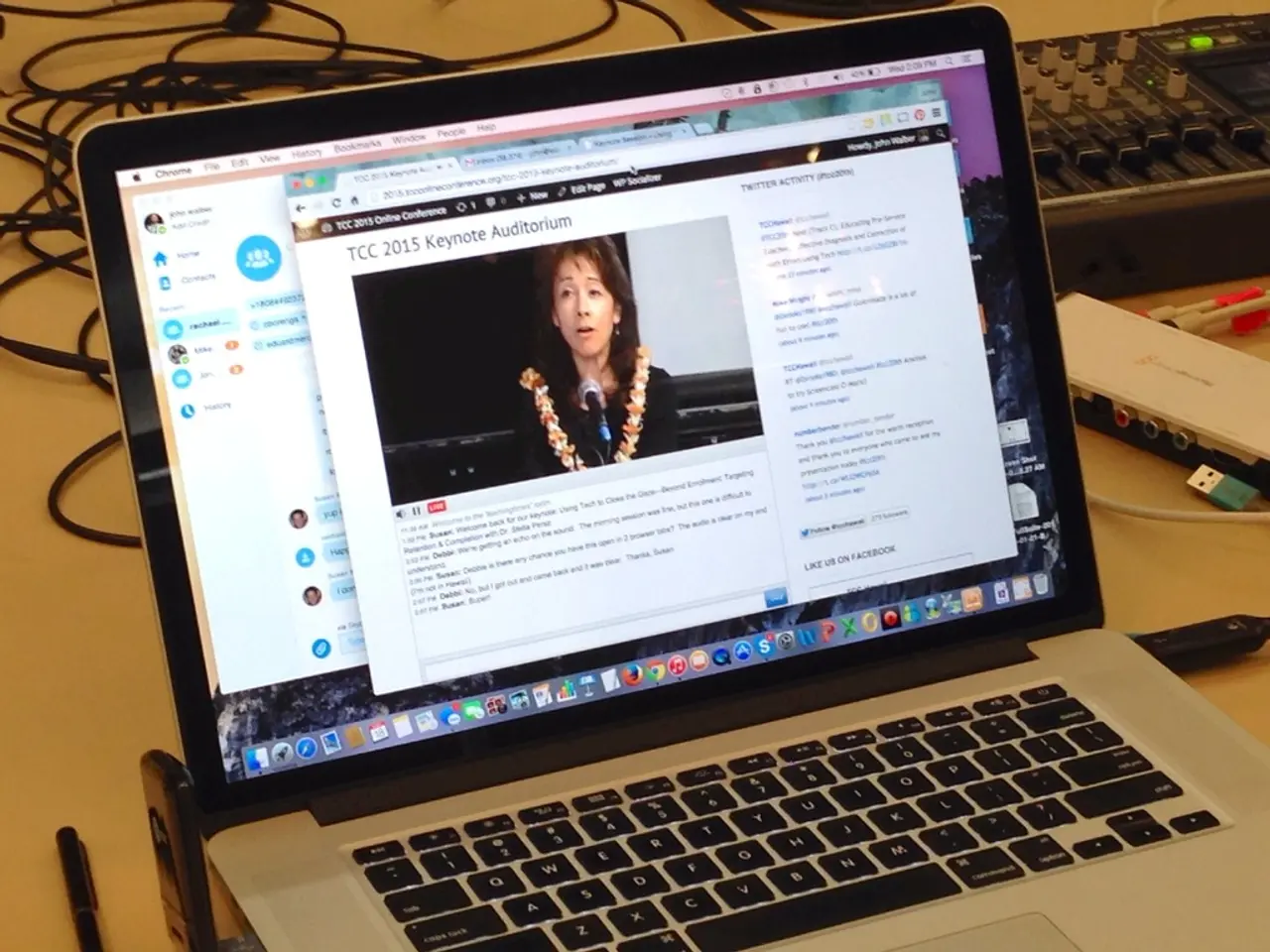The mystery behind sudden heart failures in younger individuals
Sudden cardiac death (SCD) in young people under 35 is a serious concern, often caused by genetic or congenital heart conditions, coronary artery disease, and electrical abnormalities of the heart.
Common causes of SCD in young people include genetic conditions such as hypertrophic cardiomyopathy, long QT syndrome, and arrhythmogenic right ventricular cardiomyopathy. Coronary artery disease, even in young adults, can also be a factor, as can lifestyle factors like smoking, poor diet, obesity, and diabetes. Post-COVID complications and chronic stress are emerging concerns. A family history of SCD also plays a role [1][2][5].
Symptoms to watch for include chest pain or chest tightness, especially during exertion, shortness of breath, dizziness, blackouts, or fainting, heart palpitations or irregular heartbeat, and unexplained fatigue or weakness [1][3][5].
Preventive measures focus on regular cardiovascular screenings to detect hidden conditions, maintaining a healthy lifestyle through balanced diets low in unhealthy fats and salt, regular physical activity, quitting smoking, avoiding excessive alcohol, and stress management techniques to reduce chronic stress impacts. Public awareness of warning signs and knowledge of CPR and emergency response are also crucial [1][2][4][5].
In the general population, the rate of SCD among people aged 18 years or younger, but excluding infants, is between 1-2 people per year. Among athletes ages 9-40 years, SCD is estimated to occur in 1 out of every 40,000-80,000 people [6].
Hypertrophic cardiomyopathy (HCM), a genetic heart condition that affects up to 1 in every 500 people, can cause SCD [7]. In HCM, the muscles of the left ventricle become thickened and enlarged, which can result in a reduced left ventricle volume and impaired activity of the aortic valve.
It's important to note that there is debate about whether people with heart abnormalities should avoid physical activity. A personalized approach may be more appropriate, with recommendations made on a case-by-case basis. Moderate-intensity physical activity is generally considered safe for people with heart abnormalities and may help maintain overall heart health [8].
Taken together, the key to preventing SCD in young people is early identification of risk factors and timely intervention through lifestyle and medical management, coupled with heightened awareness of symptoms and emergency response skills.
References: [1] American Heart Association. (2021). Sudden Cardiac Arrest in Young People. https://www.heart.org/en/health-topics/cardiac-arrest/understanding-sudden-cardiac-arrest/sudden-cardiac-arrest-in-young-people [2] Mayo Clinic. (2021). Sudden cardiac death. https://www.mayoclinic.org/diseases-conditions/sudden-cardiac-death/symptoms-causes/syc-20369825 [3] Cleveland Clinic. (2021). Sudden Cardiac Arrest. https://my.clevelandclinic.org/health/diseases/15048-sudden-cardiac-arrest [4] Harvard Health Publishing. (2020). Sudden cardiac arrest in young athletes: Prevention and response. https://www.health.harvard.edu/staying-healthy/sudden-cardiac-arrest-in-young-athletes-prevention-and-response [5] National Heart, Lung, and Blood Institute. (2021). Sudden Cardiac Death. https://www.nhlbi.nih.gov/health-topics/sudden-cardiac-death [6] National Institute of Health. (2021). Sudden Cardiac Death in Young Adults. https://www.ncbi.nlm.nih.gov/books/NBK532930/ [7] American Heart Association. (2021). Hypertrophic Cardiomyopathy. https://www.heart.org/en/health-topics/heart-failure/about-heart-failure/hypertrophic-cardiomyopathy [8] American Heart Association. (2021). Exercise and Physical Activity for People with Heart Disease and Stroke. https://www.heart.org/en/health-topics/heart-failure/about-heart-failure/exercise-and-physical-activity-for-people-with-heart-disease-and-stroke
- In the unfortunate event of sudden cardiac death (SCD) in young people, it is often linked to genetic or congenital heart conditions, such as hypertrophic cardiomyopathy, long QT syndrome, and arrhythmogenic right ventricular cardiomyopathy.
- Lifestyle factors like smoking, poor diet, obesity, and diabetes can contribute to SCD, even in young adults, while coronary artery disease, a disease of the cardiovascular system, can also be a factor.
- Early intervention through lifestyle and medical management is crucial for preventing SCD, which involves regular cardiovascular screenings to detect hidden conditions, maintaining a healthy lifestyle, and CPR & emergency response skills.
- Mental health, a significant aspect of health-and-wellness, plays a role in the overall well-being of individuals and can impact cardiovascular-health, further emphasizing the importance of taking care of one's mental health.
- Other heart diseases, such as hypertrophic cardiomyopathy, which affects up to 1 in every 500 people, can lead to sudden cardiac death, highlighting the necessity of scientific research for better understanding and management of these medical-conditions.
- In the debate around whether people with heart abnormalities should avoid physical activity, a personalized approach is more appropriate, while moderate-intensity physical activity is generally considered safe and beneficial for heart health.




